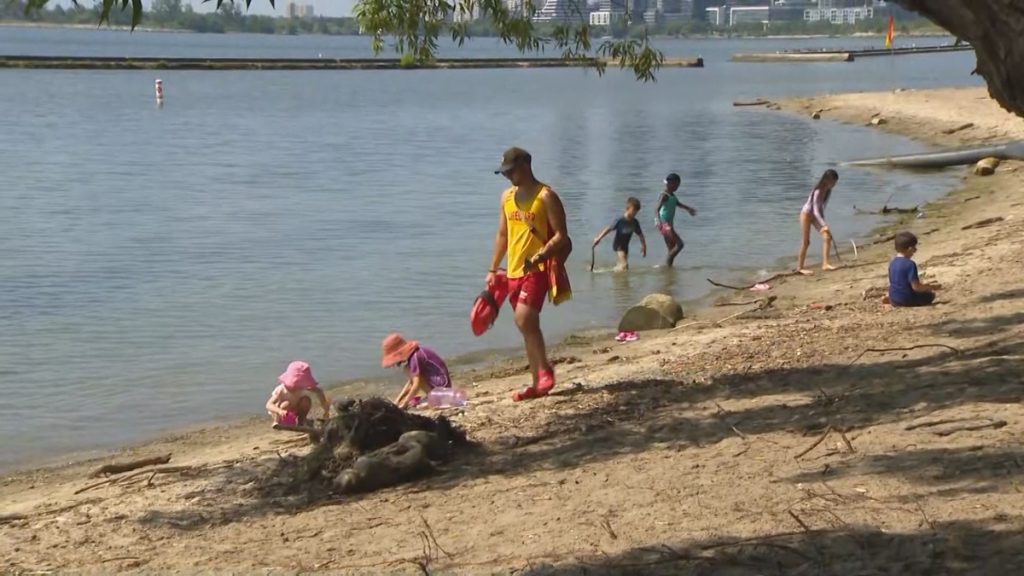The Ontario Provincial Police (OPP) are investigating a recent series of drownings, prompting the Lifesaving Society to advocate for heightened vigilance among individuals visiting local lakes and rivers. Stephanie Bakalar, a spokesperson from the organization’s Ontario branch, expressed her sorrow over the tragic incidents, particularly as a mother and drowning prevention advocate. “I want other families to understand that we can prevent drownings, and we can keep your little ones safe as long as we work together and understand the risks and the prevention steps,” she stated.
On Saturday evening, OPP and emergency crews responded to Mille Roches Beach in Long Sault, located approximately 15 minutes west of Cornwall. At around 5:45 p.m., they received reports of a three-year-old boy who was found without vital signs. Despite the efforts of off-duty medical professionals to revive the boy, he was later pronounced dead at a hospital.
Earlier that same day, at approximately 1 p.m., emergency teams were called to Wasaga Beach. They received reports of a 24-year-old man from Toronto who went missing after his kayak capsized. Firefighters successfully located him, but attempts at resuscitation were ultimately unsuccessful.
Another drowning incident occurred days earlier when a three-year-old child drowned while visiting Sandbanks Provincial Park in Prince Edward County on Thursday. The child had been playing with family in shallow water but was reported missing shortly thereafter. Bystanders discovered the child, who was rushed to the hospital but unfortunately could not be saved.
The incidents of drowning continued as a 24-year-old man from the Toronto area drowned while canoeing with friends on East Lake in Prince Edward County on July 20. After they decided to swim, one individual managed to reach shore while the others struggled. A search and recovery team later found the fourth person, who had failed to resurface. Additionally, on July 19, a 51-year-old Toronto man drowned in East Lake.
As investigations into these tragedies proceed, the OPP has issued a strong warning encouraging the use of life jackets. An OPP statement indicated that capsizing or falling overboard are leading causes of death in boating incidents, emphasizing that wearing a life jacket can be life-saving. This summer, there have been ten marine fatalities in eastern Ontario, significantly higher than the number reported at the same time last year.
Bakalar emphasized that drowning is predominantly preventable. “There are some instances where someone may have another issue because they’ve had a medical incident or something like that,” she explained. Most drownings occur because individuals swim alone, overestimate their swimming abilities, or neglect to wear life jackets. She highlighted various environmental hazards, including colder water temperatures and unstable surfaces, that warrant greater caution.
From 2017 to 2021, Bakalar noted that the primary causes of drowning in Ontario included 35% while swimming, 13% during recreational activities near water, and 10% related to power boating. Wearing a proper life jacket is essential, especially one that is appropriate for the wearer's weight and age, and approved by relevant authorities such as Fisheries and Oceans Canada.
Additional safety tips include checking weather forecasts before swimming, ensuring that individuals swim with companions, and refraining from diving headfirst into shallow areas. Bakalar strongly encourages individuals to choose swimming locations where lifeguards are on duty, as only 1% of drownings in Ontario occur in such monitored environments.
Finally, Bakalar urged everyone to learn basic swimming skills, regardless of age or ability. The Lifesaving Society offers programs tailored for adults who did not learn to swim earlier in life. She recounted her experiences teaching older adults to swim, emphasizing that with the right support, anyone can become a competent swimmer, regardless of their past fears or hesitations.












